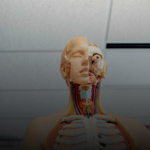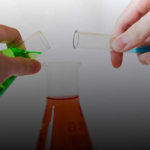Section 1
Preview this deck
Occipital Lobe
Front
Active users
16
All-time users
16
Favorites
0
Last updated
6 years ago
Date created
Mar 1, 2020
Cards (80)
Section 1
(50 cards)
Occipital Lobe
Part of the brain; at the back of the head. Involved in vision.
Acetylcholine
-A neurotransmitter that enables learning, memory, and the control of muscles. -Nicotine
Thalamus
Part of the brain; a ball shaped structure at the top of the brain stem. Serves as the sensory switchboard, sends sensory information where it needs to go.
Parasympathetic
A subdivision of the Autonomic Nervous System; controls things that makes you calm, like the relief after a stressful situation. Automatically lowers heart beat, constricts pupils, etc.
Motor Neurons
Neurons that carry outgoing information from the brain and spinal cord to the muscles and glands.
Visual Cortex
Part of the brain; registers written language as visual representations.
Sensory Neurons
Neurons that carry incoming information from the sense receptors to the central nervous system.
Brain Plasticity
The ability for the brain to alter its structure and function; decreases with age.
Hypothalamus
Part of the brain; part of the limbic system. Is involved in the regulation of basic biological needs, and controls when the pituitary gland releases hormones.
Nerves
Bundles of axons that connect the central nervous system with the rest of the body.
Temporal Lobe
Part of the brain; just above the ears. Involved in hearing.
Central Nervous System (CNS)
-Brain & Spinal Cord. -Inside
Axon
Part of the neuron; thin fibers branching out of the neuron that send the information from the cell body to other neurons.
Neurotransmitters
Chemical messengers manufactured by neurons, that cross the synaptic gap to send the message to another neuron.
Endorphins
Literally meaning morphine within, are natural, opiate like neurotransmitters, and they are linked to things like pain control and pleasure.
Terminal Branches
Branched end of axon that contains neurotransmitters, which are then sent to another Neuron's Dendrites.
Parietal Lobe
Part of the brain; at the top of the head and toward the rear. Receive sensory input for touch and body position.
Cerebellum
Part of the brain; attached to the rear of the brain. Coordinates voluntary muscle movement and helps to process sensory information.
Reticular Formation
Part of the brain; a nerve network in the brainstem. Plays an important role in controlling arousal, alertness.
Interneurons
CNS neurons that internally communicate between the sensory neurons and motor neurons.
Sympathetic Nervous System
A subdivision of the Autonomic Nervous System; controls things that cause arousal, like fight or flight. Automatically increases heart rate, dilates pupils, etc.
Synaptic Gap (Synapse)
The gap between the tip of the axon's terminal branch and the dendrite of another neuron. Neurotransmitters can still be sent across this gap.
Pons
Part of the brain; located on the brainstem. Controls facial expressions, facial sensation, and eye movement.
GABA
-A major regulating neurotransmitter. Under supply linked to seizures, tremors, and insomnia. -Tranquilizers -Alcohol
Frontal Lobe
Part of the brain; just behind the forehead. Is involved in speaking, muscle movements, and planning and judgement.
Hormones
Chemical messengers, mostly those manufactured by the endocrine glands, that are produced in one tissue and affect another.
Angular Gyrus
Part of the brain; transforms visual representations to auditory codes.
Serotonin
-A neurotransmitter that affects mood, hunger, sleep and arousal. -Ecstasy -LSD -Cocaine
Broca's Area
Part of the brain; controls muscles involved in speech through the motor cortex. Ex: Girl had stroke was able to understand but not respond
Left Cerebral Hemisphere
Part of the brain; crucial for using language.
Peripheral Nervous System (PNS)
-All the nerves not encased in bone, the brain, or the spinal cord. -Outside -Anything not apart of the CNS
Somatic Nervous System
A subdivision of the PNS; enables voluntary control of the skeletal muscles, like dancing or running.
Motor Cortex
Part of the brain; an area at the rear of the frontal lobes that controls voluntary movements
Myelin Sheath
Part of the neuron; thick layer of fat that encase the Axon, speeds up the process of the information being sent.
Dendrite
Part of the neuron; branches that receive information from other neurons and send it towards the cell body.
Action Potential
The impulse or information sent or fired by a neuron.
Sensory Neuron
Neurons that carry incoming information from the sensory receptors to the CNS. Their responses to stimuli can cause automatic responses (knee jerk), such as backing away from something that burned you.
Cerebral Cortex
the outer layer of the cerebrum (the cerebral cortex), composed of folded gray matter and playing an important role in consciousness.
Sensory Cortex
Part of the brain; the area at the front of the parietal lobes that registers and processes body touch and movement sensations.
Brainstem
Part of the brain; oldest part of the brain in terms of evolution, controls automatic survival functions.
Autonomic Nervous System
A subdivision of the PNS; controls involuntary activity of your body through muscles and glands, like digestion or growth.
Cerebral Hemispheres
Part of the brain; the two sides of the brain, left and right.
Medulla
Part of the brain; base of brainstem. Controls heartbeat and breathing.
Pituitary Gland
Part of the brain; located in the limbic system. The master gland of the Endocrine System, releases hormones.
Dopamine
-A neurotransmitter associated with movement, attention/learning, and the brain's pleasure and reward system. -Cocaine -Meth -Block reward pathway
Reflex Pathways
Automatic born responses to stimuli, and they don't rely on conscious decisions made in the brain.
Glutamate
-A major neurotransmitter; involved in memory. -Alcohol
Endocrine System
A set of glands that secrete hormones into the bloodstream.
Neurons
A nerve cell in which the body's information system is built up from. The basic building block of the nervous system.
Wernicke's Area
Part of the brain; controls your ability to understand language. Ex: Man didn't understand but responded
Section 2
(30 cards)



